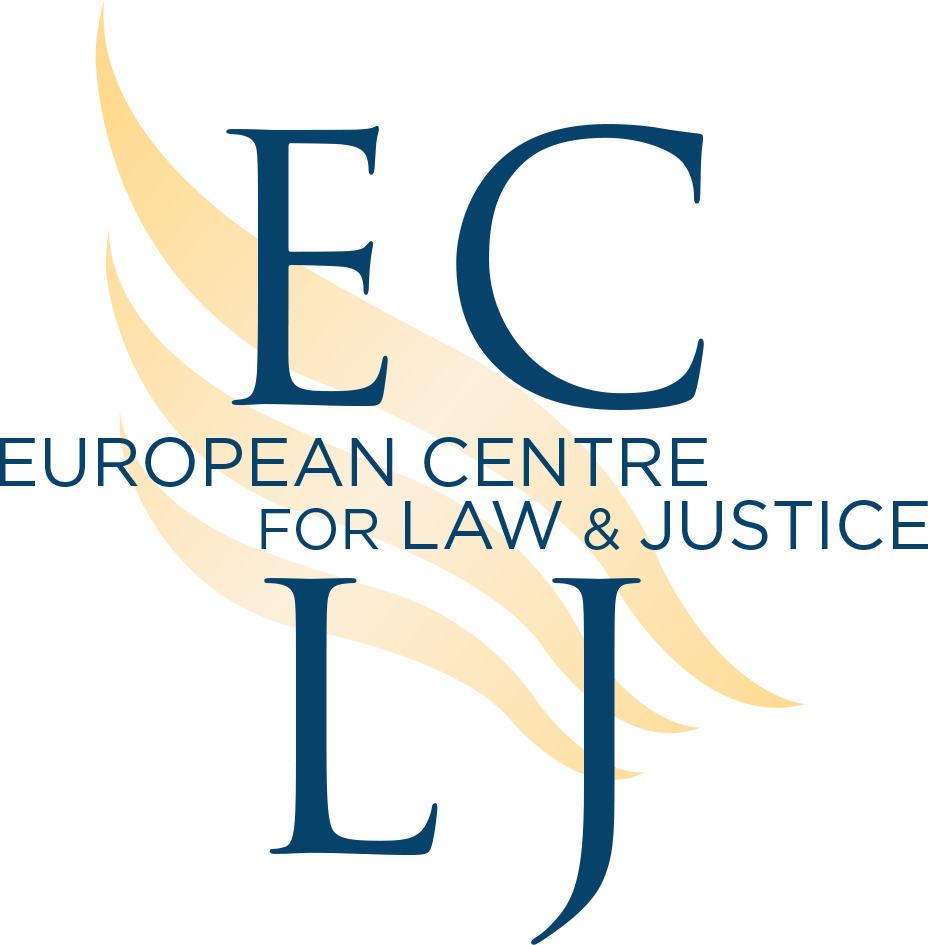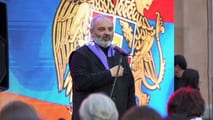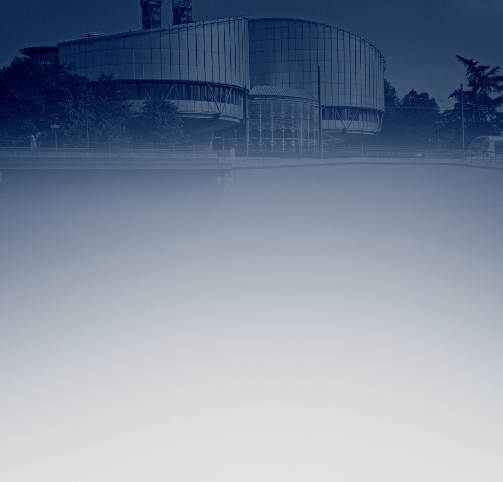“No victim status,” said the European Court of Human Rights in the Minarets Cases v. Switzerland
Strasbourg
Grégor Puppinck, Ph.D., Director of the ECLJ.
On June 28, 2011, the European Court of Human Rights (ECHR) declared the applications Ouardiri v. Switzerland and Ligue des musulmans de Suisse v. Switzerland (no. 65840/09 and 66274/09) inadmissible on the ground that they could not claim to be “victims” of a violation of the Convention. This decision is final, which means that the parties cannot demand a referral to the Grande Chamber in order to reassess the cases.
The ECLJ intervened as third party in those cases and has submitted written observations to the Court. Written observations of the ECLJ (only in French).
The applicants consist of a Muslim, who was spokesman for Geneva Mosque and currently a member of a foundation (first application), three associations, and a foundation (second application) pursuing the aim of providing social and spiritual assistance to Muslims living in Switzerland.
Invoking articles 9 and 14 of the European Convention on Human Rights, they complained that the new constitutional amendment in Switzerland prohibiting the building of minarets – amounted to a violation of their religious freedom and to discrimination on the grounds of religion. Mr. Ouardiri also complained, relying on article 13 of the Convention, that he had no effective remedy to seek a ruling that the constitutional amendment in question was in breach of the Convention.
Previously, on July 8, 2008, a popular initiative “against the building of minarets,” supported by the signatures of 113,540 Swiss citizens, was submitted to the Federal Chancellery (Swiss Government) in order to partially amend the Swiss Constitution. A referendum was held on 29 November 2009 and 57.5% of voters supporting the initiative. Since the results were positive, a new amendment to the Constitution was added: “The building of minarets is prohibited” (article 72, paragraph 3 of the Constitution).
Assessing the two applications, the Court recalled the admissibility criterion provided by article 34 of the Convention, according to which any application has to be lodged by an applicant who could claim to be the victim of a violation of the Convention. In its case-law, the Court admitted that one can claim to be a direct victim (if he or she is directly affected by the alleged violation), only exceptionally as an indirect victim (if he or she is indirectly affected by the alleged violation, like persons who are close to the victim, such as someone’s husband/wife or nephew), or a potential victim (persons who may be affected by the alleged violation, such as groups of people risking to be affected directly by certain legal provisions). A link should also be established between the applicant and the damage that he or she suffered because of the alleged violation.
In the two cases, the Court noted that the main complaint of the applicants was that the new constitutional provision offended their religious beliefs, without mentioning in which way it had a practical effect on them.
Therefore, the Court judged that the applicants could not be considered “direct victims” of a violation, as they do not have an aim to build a mosque with a minaret or the intention to build one in the future, nor as “indirect victims” of the alleged violation, as moral persons do not enjoy this status and as the relatives of Mr. Ouardiri were not affected in any way.
As to the possibility of being considered “potential victims”, the Court examined whether the disputed constitutional provision was asserted by a criminal sanction that would influence the behavior of Mr. Ouardiri in a way that prevented him from manifesting his religion (or from contesting the alleged provision) or whether it prevented the associations from achieving their social and spiritual aim. It responded in the negative. Noting that the applicants did not show any beginning of application of the new provision, that it had any concrete effect on them, and that they did not produce any reasonable and convincing piece of evidence as to the probability of a violation concerning them personally, the Court considered that their allegations were “simple conjectures” which cannot justify their victim status.
The Court further held, relaying on the January 21st, 2010, judgment of the Federal Court, that the Swiss courts would be able to review compatibility with the Convention of any subsequent refusal to allow the construction of a minaret.
As to the complaint related to article 13, invoked by Mr. Ouardiri, the Court rejected it, recalling that this article does not guarantee a remedy allowing a State’s legislation in itself to be challenged on the ground of being contrary to the Convention – but an individual measure taken in order to apply a legislation.
Rejecting the applications on admissibility grounds, the Court did not have the opportunity to deliver a judgment on the merits of the cases. Instead it discussed the legitimacy and compliance of the democratic decision of the Swiss people, taken by referendum, to preserve their religious identity in the public space as a component of their right to culture with the article 9 of the Convention (freedom of thought, conscience and religion).
But once an applicant is refused the opportunity to build a mosque with a minaret and after exhausting the domestic remedies available in Switzerland, the Court would be able to decide on the merits of the case and implicitly on those issues, if an application is filed with the Court.
In observations submitted to the Court on October 22, 2010, the ECLJ wished to frame the minaret case into a broader perspective concerning the crisis that religious freedom undergoes. Indeed, the Swiss referendum, as well as the law banning Islamic headscarves, amounts to a disavowal of the pluralistic, tolerant and multicultural conception of religious freedom. Since the end of World War II, this conception has prevailed in interpreting Article 9 of the Convention.
Regarding the evolution of the concept of religious freedom, the cases concerning the minaret, the Islamic headscarves and even the crucifix at school demonstrate that the law must increasingly recognize each country’s culture. In that respect, this recognition must complement the concepts of “neutrality” and “secularism” usually used by the Court to govern the relationships between civil power and religious matters. Imagining the “pubic space” as religiously neutral or empty, these two useful and complementary approaches can hardly comprehend, in a realistic manner, the cultural dimension of the “social reality”— particularly the socioreligious one. Leading to the paradox of protecting religious freedom by socially eliminating religion, these two common approaches do not seem to respect the spirit of the Convention.
According to the ECLJ, a third approach is necessary to complete the concepts of neutrality and secularism. In fact, if neutrality is aimed at intra or interreligious conflicts without any repercussion on the State and if secularism aims to protect the State from religious power, neither neutrality nor secularism enable comprehension of the connection between the religious phenomenon and the very foundations of society, i.e. the essential components of society’s identity. This third approach consists of a substantial recognition of the cultural reality, or in other words, giving up the fictional idea that the public space is a religiously neutral or empty space.
The religious dimension of the identity crisis undergone by Western and Eastern Europe, as well as countries of Muslim culture, show that the social dimension of religion cannot be constantly ignored. The socioreligious identity of a culture cannot be “neutralized.” It can, however, be denied, struggled or replaced but not neutralized. In the same way, the neutrality of the State cannot require the culture to be religiously neutralized. In Grégor Puppinck’s opinion, Director of the ECLJ, a more realistic approach towards religious freedom re-rooted in the cultural reality should be pursued. This acknowledgement of the cultural reality should permit, under certain conditions, recognition as legitimate the interest that society may have towards its own culture, not only its linguistic and patrimonial dimensions, but also its religious and socioreligious dimensions.
Regarding European values, the Court has clearly rejected a relativist approach, notably in the rulings Leyla Sahin and Refah Partisi v. Turkey. In this last case, the Court held “that sharia is incompatible with the fundamental principles of democracy, as set forth in the Convention.” The Court noted that “it is difficult to declare one’s respect for democracy and human rights while at the same time supporting a regime based on sharia ....”
However, it is questionable that references to pluralism, tolerance and broadmindedness as the hallmarks of a “democratic society” can alone account for the cultural reality of the public space. In order to account for this reality, one should not only acknowledge the moral values that can be universalized but also the culture, language, manners, and traditions (even the religious ones) as elements which could legitimately be taken into consideration. It is true that these elements are not universal but specific. They are part of the nations; they are the ultimate foundation of the right of people to self-determination and of their sovereignty. These elements are the basis of the nation and the State; ignoring them is not realistic, as the Swiss people reminded us during the referendum of November 29, 2009.
The idea of a secularized European public space is actually completely foreign to the spirit of the Council of Europe. In fact, the secularization of the European public space would be a failure of the Council of Europe’s project. Indeed, as stated in the Statute of the Council of Europe and in the spirit of the Convention, these “underlying values” are nothing other than “the spiritual and moral values which are the common heritage of their peoples and the true source of individual freedom, political liberty and the rule of law, principles which form the basis of all genuine democracy.” Henceforth, this heritage should be used to anchor public freedoms.
In fine, the ECLJ wanted to make the Court aware that the preservation of this cultural and spiritual heritage as a legitimate interest could contribute to giving back substance to the European public space—in particular in its socioreligious dimension.
Related documents (only in French):
- Observations écrites de l’ECLJ.
- Observations du gouvernement suisse dans l’affaire Ouardiri.
- Observations du gouvernement suisse dans l’affaire Association « ligue des musulmans de Suisse » et autres contre la Suisse.
The European Centre for Law and Justice is an international, Non-Governmental Organization dedicated to the promotion and protection of human rights in Europe and worldwide. The ECLJ holds special Consultative Status before the United Nations/ECOSOC since 2007. The ECLJ engages legal, legislative, and cultural issues by implementing an effective strategy of advocacy, education, and litigation. The ECLJ advocates in particular the protection of religious freedoms and the dignity of the person and life with the European Court of Human Rights and the other mechanisms afforded by the United Nations, the Council of Europe, the European Parliament, the Organization for Security and Cooperation in Europe (OSCE), and others. The ECLJ bases its action on “the spiritual and moral values which are the common heritage of European peoples and the true source of individual freedom, political liberty and the rule of law, principles which form the basis of all genuine democracy” (Preamble of the Statute of the Council of Europe).









